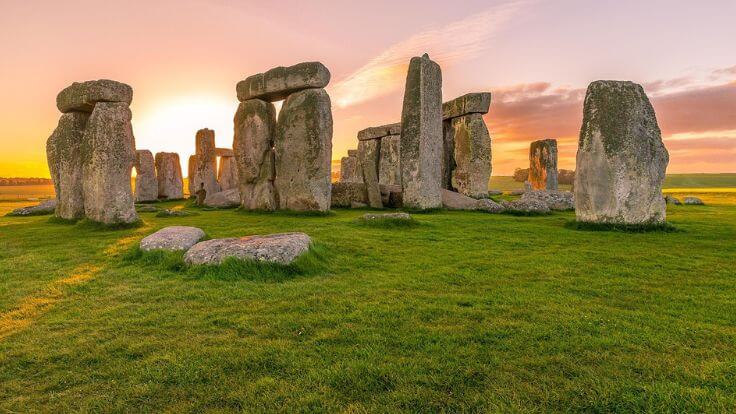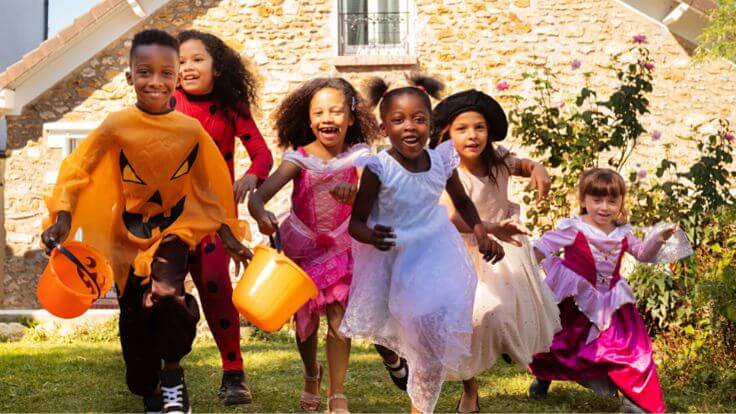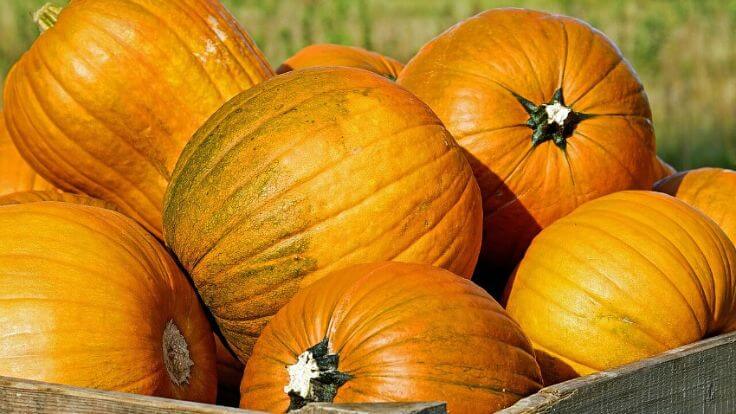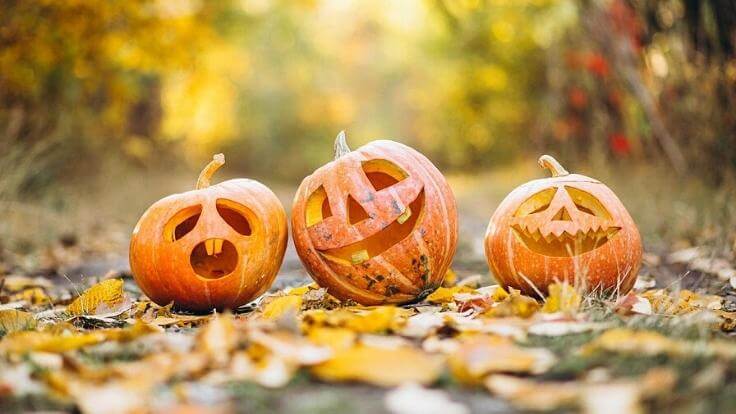Halloween is a controversial topic for Christians. This late fall holiday is a curious mix of pagan, religious, and seasonal elements. To form a biblical response, you need to know the history of Halloween.
You might think Halloween is strictly an American holiday. Costumes, candy, and monster balls, are popular traditions, passed down over generations. But the holiday didn’t start in the states at all.
Today, we’ll look at the history of Halloween. Its pagan roots, the Roman influence, and how the holiday became an American tradition.
Let’s dive in.
📋 DISCLOSURE – This page has affiliate links. If you buy something through one of these links, I may earn a commission at no cost to you. Read more here.
The History of Halloween
As early Christianity spread across Europe, it collided with pagan cultures. This was a challenge for new believers and a stumbling block to their spiritual growth.
The organized church tried to counter pagan sway with Christian alternatives. For example, church holidays shared calendar dates with pagan festivals. But this didn’t remove pagan influences; it only mixed them with Christian symbolism.
Case in point: All Hallows’ Eve – the original Halloween alternative.

Halloween’s Pagan Roots
The history of Halloween starts with the Celtic festival of Samhain (pronounced “sow-en”). This annual observance fell between the autumn equinox and winter solstice.
The Celts were an ancient European people group made up of many tribes. They believed in a spirit world that could interact with the natural world. They thought invisible gates separated the living from the dead.
The Celts believed these gates opened on October 31, the last day of the Celtic year. On this day, the ghosts of the dead would return to earth. The purpose was to destroy the crops, ruin the harvest, and disrupt the people.
But it wasn’t all menace and mayhem.
The spirits’ presence made it easier for the Celtic priests, or Druids, to predict the future. Their prophecies gave the people solace and guidance for the dark winter ahead.
The Druids built sacred bonfires and offered animal sacrifices to the gods. The people danced around these fires to celebrate the harvest. At the end of the celebrations, they lit hearth fires from the bonfires to stave off the spirits.
📋 FUN FACT – Some sources say the Celts created jack-o’-lanterns to ward off evil spirits. Others link these pumpkins to Irish folktales centering on a trickster-type character.
The Roman Influence
By the middle of the first century, Roman legions had conquered most of the territory held by the Celts. During her reign over Celtic lands, Rome merged two of her festivals with Samhain.
The first festival, Feralia, celebrated the Manes, Roman spirits of the dead. The second one, Pomona Day, honored the Roman goddess of orchards.
📋 FUN FACT – The apple symbolized the Roman goddess Pomona. Merging her festival with Samhain might explain the Halloween custom of apple bobbing.
In 609 AD, the Catholic Church dedicated the Pantheon (a former Roman temple) to Christian martyrs. It also replaced Samhain with three church-sanctioned holidays on consecutive days:
- Halloween – October 31
- All Saints Day – November 1
- All Souls Day – November 2
The Celtic New Year, November 1, became All Martyrs Day to honor the Christian martyrs. In time, the name evolved into All Saints Day to include all the saints.
All Saints Day was first called Allhallows or Allhallowmas. It follows All Hallows’ Eve, what we now call Hallowe’en or Halloween.
November 2 became All Souls Day to honor the dead. It is a day of remembrance for the souls of those who have died. It honors ALL the departed, especially family and friends.

Halloween in America
Halloween is a major holiday in the United States. European immigrants brought it here in the late 19th century. The new Americans retained many of their European religious traditions, including Halloween.
For many immigrants, Halloween celebrations had religious elements. But American-born youth gravitated to the mischief-making aspects of the holiday. They dressed up in scary costumes and walked from house to house, seeking food and money.
These early American Halloween revelers sang and danced on Halloween night. They told ghost stories around the fire and read each other’s fortunes. They also engaged in trickster pranks and games.
By the 1930s, Halloween was generally a secular holiday. Pagan rituals blended with Catholic church practices. European traditions mingled with native American customs. And many of the celebrations centered on community or neighborhood gatherings.
Today, Halloween is a hodgepodge of customs and traditions. It’s also a major holiday for American retailers. The National Retail Federation said Halloween spending could surpass $10 billion or more in 2022.
Halloween is a big deal all around.
Wrapping It Up
I hope you enjoyed this short history of Halloween. I realize this holiday can be awkward and uncomfortable for Christians. So tomorrow, I’ll share a biblical response to Halloween. Until then, here are three more seasonal posts to read and share. ◻️
Related Posts
- All Saints Day: A Day to Honor the Faithful Servants of God
- Trick or Truth? Halloween Gospel Tracts Are Easy and Fun
- October is the Perfect Time to Celebrate Apples

Now It’s Your Turn
Thank you for reading my post. Now it’s YOUR turn to chime in. Does your family celebrate Halloween? Considering its history, what will you do different this year?
Let’s fill the comments with friendly conversation. Scroll down to leave a reply, ask a question, or just say hello. And if you liked this post, please give it a share.
Blessings, Annette
📋 NOTE – You are reading “How the Spookiest Day of the Year Came to Be.” An earlier version appeared on Blogger in 2016. It has been updated for the Savoring Home community.
Photo Sources
- Mayur Gadge, Sally Wilson, Ilona (Couleur) | Pixabay | License
- Sergey Novikov / Getty Images | Canva | License
